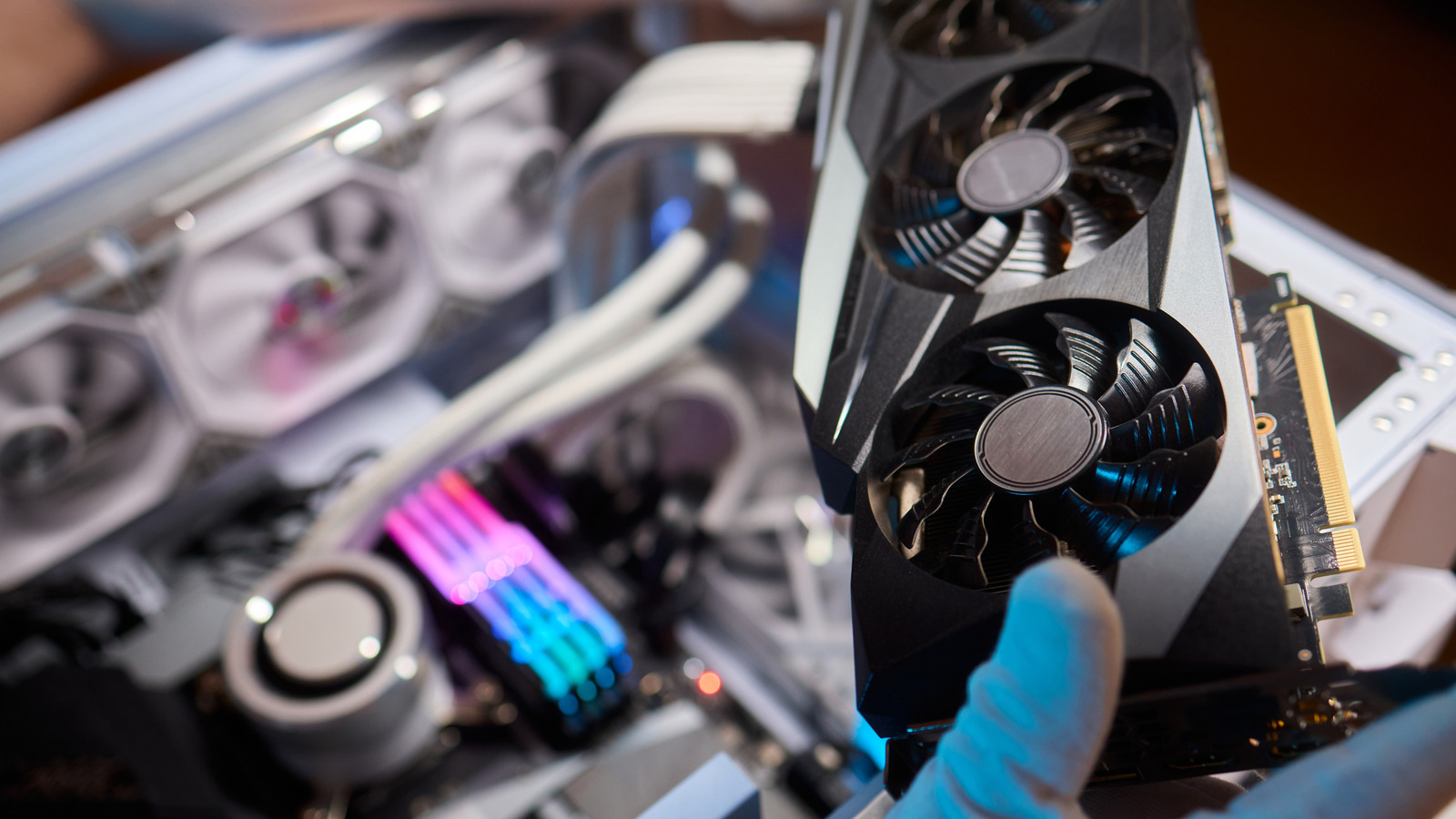Table of Contents
Buying a new television can break your brain more than it breaks your budget. If you’re not a picky cinephile or longtime gamer, TV specs are one of those Michael Scott “Explain it to me like I’m five” things. (So are laptop specs.)
Lengthy product titles on Amazon TVs definitely aren’t helping the confusion. A cluster of nebulous descriptors like “Omni Mini-LED, QLED 4K UHD, Dolby Vision IQ, 144hz, Ambient Experience” isn’t exactly accessible to the average person — it’s pure chaos.
Our favorite expert-tested TV brands include LG, TCL, Hisense, and Samsung
So I’m simplifying that mess in this straightforward TV buyers guide, breaking down specs like QLED and OLED lighting, 4K resolution, brightness, and refresh rate. Recommendations for the best TVs to buy in 2025 are at the bottom of this guide, thanks to intel from ‘s Ty Pendlebury. ( and Mashable are both owned by publisher Ziff Davis.)
Lighting explained: LED vs. QLED vs. OLED
The main thing to know: 4K and LED are not talking about the same thing. 4K refers to resolution, and terms containing -LED refer to lighting.
Contrary to the TV-related queries that fill Google’s “People also asked” section, you don’t have to choose between, say, 4K or QLED. For example, a TV can have 4K resolution with LED, QLED, or OLED lighting. The order listed there also reflects their escalating price points: LED TVs are the most affordable of the types of TV lighting, QLED TVs can be entry-level and affordable or high-end and expensive, and OLED TVs are the most expensive type of TV because their lighting system is the most advanced. You’re much more likely to find cheap QLED TVs than you are to find cheap OLED TVs.
What is QLED?
Technical translation: QLED stands for Quantum Dot Light-Emitting Diode.
Quantum dots are tiny nanocrystals that can convert the basic spectrum of light into billions of vibrant colors. Measuring no more than 10 nanometers in size, a quantum dot beside even a single piece of human hair would look as small as Earth looks beside massive stars in those ‘scale of the universe’ videos. Existential dread incoming.
Because they’re so small, millions (sometimes billions) of quantum dots can be packed into a quantum dot display. Each has the ability to receive and reflect the light coming from the backlight panel layered behind them. The color of the light reflected depends on the size of each particle.
The color of the light reflected in a quantum dot depends on the size of each particle.
Credit: Samsung
The more quantum dots that can be packed into a display, the more vibrant the range of colors and brightness the TV can produce. Color gamut is the official term you’ll see denoting the range of colors a TV can produce. A wide color gamut simply means more saturated colors, regardless of where they fall on the rainbow.
Brightness, simply the amount of light that the TV screen produces, is measured in nits. Traditional LED TVs typically hit around 500 nits, while even the cheapest QLEDs out there nowadays will clear 1,000 nits. Nit count continues to ante up as the TVs get more premium — the best TVs of 2025 easily hit 2,000 nits at peak brightness.
Thank goodness: Max is changing its name back to HBO Max
What is mini LED?
Technical translation: Mini LED is a type of TV lighting that uses more, tinier-than-usual LED bulbs in a TV’s LCD panel.
QLED is not synonymous with mini LED — QLED has to do with the nanocrystals that reflect light from bulbs in the panel, while mini LED has to do with the bulbs themselves.
Smaller, more jam-packed LED bulbs across the screen allow for more precise brightness control within small zones (called dimming zones) of the screen. These clusters of bulbs can be dimmed or turned off together to achieve more detailed contrast without muddying things up for the parts of the scene that need to be bright and colorful.
The more local dimming zones a screen has, the more opportunities to fine-tune color and contrast across each inch of each scene, ultimately leading to a sharper, more realistic image on the screen. Budget-friendly mini LED TVs probably won’t have more than 200 dimming zones, while solid mid-range picks might up the count to 500. The best mini LED TVs have 1,000+ dimming zones and will get the closest to the OLED experience in terms of contrast (more on that later).
Best 55-inch and under TVs for your bedroom, the kids’ room, or your apartment
When QLED does its best work: The main advantage of QLED is brightness, which is inherently better at handling glare and reflections in bright rooms. QLED TVs are ideal for people whose TV usage happens mostly in the daytime, especially watching sports. Less than 1,000 nits of brightness, like the low numbers produced by a more basic LED TV, just isn’t bright enough for comfortable visibility when it’s competing with direct sunlight.
Mashable Light Speed
Ideally, QLED technology will be paired with mini LED technology to create the most well-rounded picture — this is what Samsung’s Neo QLED TVs do.
When QLED isn’t great: The main disadvantage of QLED TVs is dulled contrast, especially when it comes to black levels. QLEDs simply have a hard time reaching as deep of a black tone as OLED pixels do. The combination of these muted black levels with the brightness of light colors can sometimes backfire with what’s commonly called blooming or haloing: a ring-shaped glow around bright objects on the screen. The halo effect can mess with the legibility of details on the screen, like captions written in white letters.
What is OLED?
Technical translation: OLED stands for Organic Light Emitting Diode.
The one-letter shift between QLED and OLED doesn’t accurately represent how starkly different these two lighting technologies are. While QLED pixels are merely casting light coming from behind them (but making it juicier), OLED pixels emit their own light. These self-lighting pixels can individually turn themselves on and off, which is how light/dark scenes show up.

The OLED TV on the right has one less layer — no backlight.
Credit: Samsung Display
When OLED does its best work: The main advantages of OLED TVs are contrast and deep black levels. OLED TVs are ideal for people who do most of their TV watching or gaming in the dark, or watch a lot of dimly-lit content that gets muddied on more basic TVs.
How to watch ‘Sinners’: See the smash horror hit at home
The main disadvantage of OLED is the eventual likelihood of “burn-in,” or permanently dimmed OLED pixels that show up as little black dots on the screen. OLED burn-in happens over a span of several years — not quickly enough that it stops many TV experts from generally preferring OLED TVs over QLED, anyway. Most newer OLED screens have built-in protective features that can prolong burn-in, like pixel refresh to shake up a static screen. You can also mitigate burn-in by simply not leaving your TV on all day, every day.
Resolution explained: FHD vs. 4K vs. 8K
Technical translation: Resolution refers to the number of pixels(p) that make up the picture on the screen.
The most common TV resolutions in 2025 are FHD, 4K, and 8K. Resolution technically measures the pixel count horizontally and vertically, but is sometimes shortened to just the vertical number. (For example, FHD is 1920x1080p, but is often represented as just “1080p”.) A higher pixel count allows for more details, leading to clearer picture quality.
The best Netflix movies of 2025 now streaming
You’ve probably stumbled across 4K the most, which is a much more self-explanatory term than you may think: 4K is literally just four times the resolution of FHD. (4K measures 3840 x 2160, which is double the horizontal and double the vertical resolution of FHD’s 1920 x 1080.) For most consumer buying purposes, 4K and UHD are essentially interchangeable.

For most intents and purposes, 4K and UHD are interchangeable.
Credit: LG
The math gets more intense with the switch to 8K: At 7680 x 4320, 8K is four times the resolution of 4K and 16 times the resolution of FHD. But honestly, you probably don’t have to worry about 8K right now. While it’s the sharpest TV resolution one can get on paper, there’s not enough content that can even be watched in 8K right now to make buying an 8K TV worthwhile.
HDR explained
Technical translation: HDR stands for high-dynamic range.
In the most lucid sense, HDR allows certain content to get brighter and more contrasted — as close to seeing the image IRL as possible. HDR is a technology that has the capacity to “understand” color and contrast data about what was originally shot through the camera lens that more basic technology, like SDR (standard dynamic range), just can’t translate.

HDR “understands” color and contrast data better than SDR.
Credit: LG
Not all TVs can get bright enough to fully take advantage of HDR’s brightening capabilities, even if they claim to technically support the technology. Remember that conversation about brightness and nits we had earlier? Any TV toeing 1,000 nits probably won’t be able to give you the optimal HDR experience.
On the flip side, a really good TV can’t magically turn everything into HDR content — the movie, show, or video game has to be HDR compatible in the first place. For example, Hulu supports HDR for some titles and devices, but not others. Depending on your TV, calibrating HDR could be relatively simple or a pain in the ass, and is often trickier to nail with video games and monitors than with streamed content on a TV.
10 Nintendo Switch 2 launch titles I can’t wait to play (besides ‘Mario Kart World’)
There are a few main types of HDR formats: HDR10 (the most common “generic” one), Dolby Vision (the next most common one), and HDR10+ (Samsung’s own version of HDR10). Most streaming services support at least the first two. The main difference between the HDR formats involves some heavy jargon that the average TV buyer probably doesn’t need to dissect — but if you’re really interested in the comparison between HDR10’s use of static metadata versus Dolby Vision and HDR10+’s use of dynamic metadata, breaks down the HDR formats well.
Refresh rate explained
Technical translation: Measured in hertz (Hz), refresh rate refers to the number of times a display refreshes its image per second.
The higher the refresh rate, the smoother and more lifelike the motion on the screen will be. But if your TV watching doesn’t really exceed casual streaming service perusing, don’t focus too much on refresh rate in your shopping. You’ll probably be perfectly fine with 60Hz, which is what’s found on most budget 4K TVs, like Amazon’s 4-Series Fire TV.
Serious film watchers might find 60Hz too laggy, though, and might consider upping the ante to 120Hz. If you want to play the Switch 2 in all of its glory, a TV that supports at least 120Hz is crucial.
What Wes Anderson thinks of social media imitations of his aesthetic
Refresh rate plays the most influential role in video games, especially games that rely heavily on on-screen responsiveness. For gamers, anything under 144Hz will probably just be frustrating. This is the number that separates the good TVs from the best gaming TVs. For instance, LG’s B4 OLED is a great midrange OLED option unless you’re a hardcore gamer who wants to play at 144 fps — in that case, you’d need to upgrade to the LG C4 OLED, which supports 144Hz.
Final thoughts: How to choose a TV
Visualizing the differences between TV specs based solely on descriptions is hard. I thought my 2019 4K LED looked fine until I tested a high-end Samsung QLED in my apartment on the same TV stand in the same bright living room sunlight. Then I understood the hype.
My point? If you can, go to a store that has a TV aisle and see for yourself in person. Ideally, the TVs lined up in your local Best Buy or Target will be playing the same thing for easy side-by-side comparison of big features like picture quality, brightness, and color accuracy that can’t quite be explained.
If you need a starting point for the TVs to hunt down IRL, check out some recommendations for the best televisions of 2025 below. There’s a budget-friendly option, a mid-range mini LED option, and a top-of-their-class pick for both QLED and OLED. There’s a high chance that one or two of them will be on sale whenever you’re reading this — most of them were at the time this story was written.








